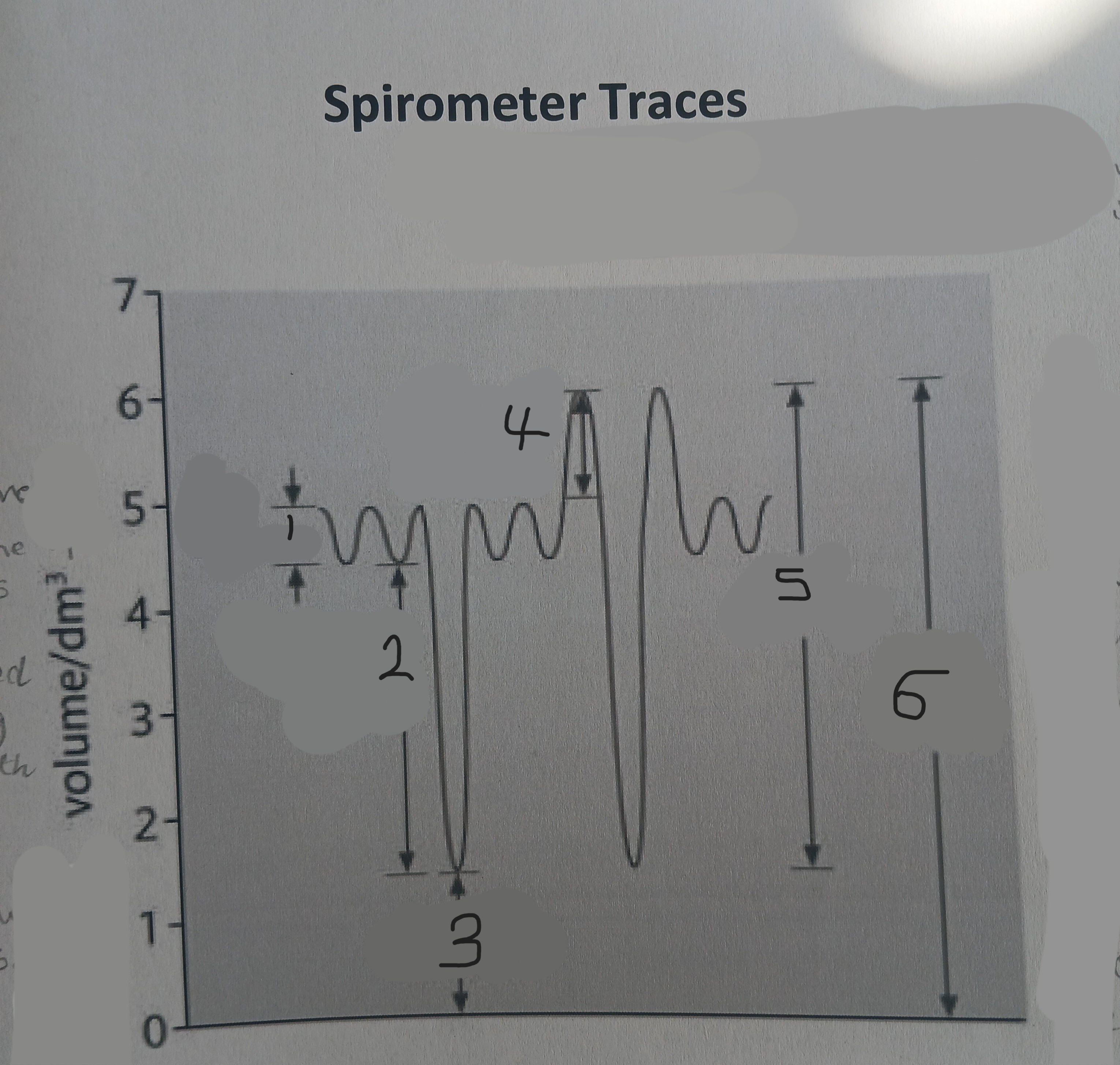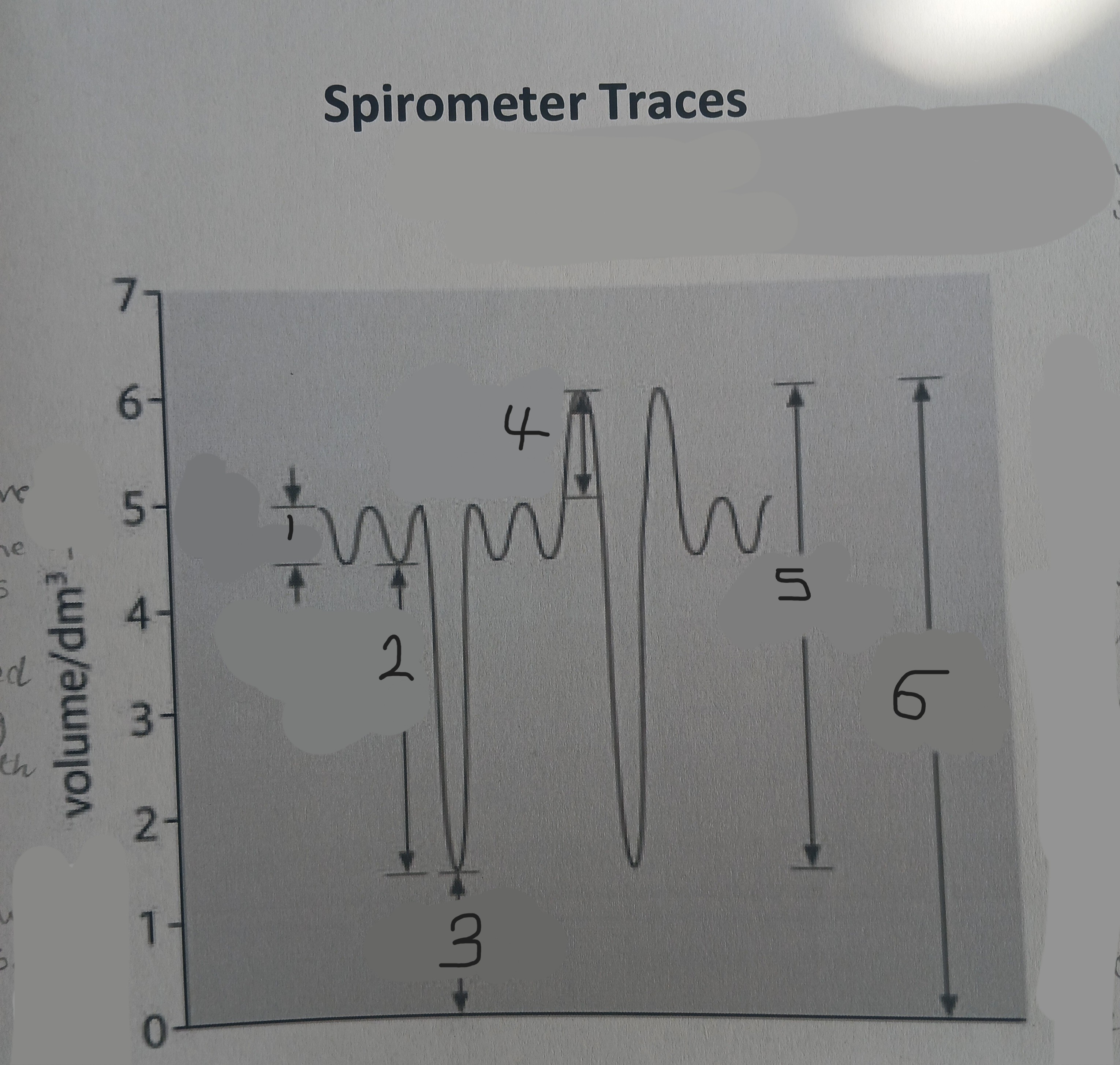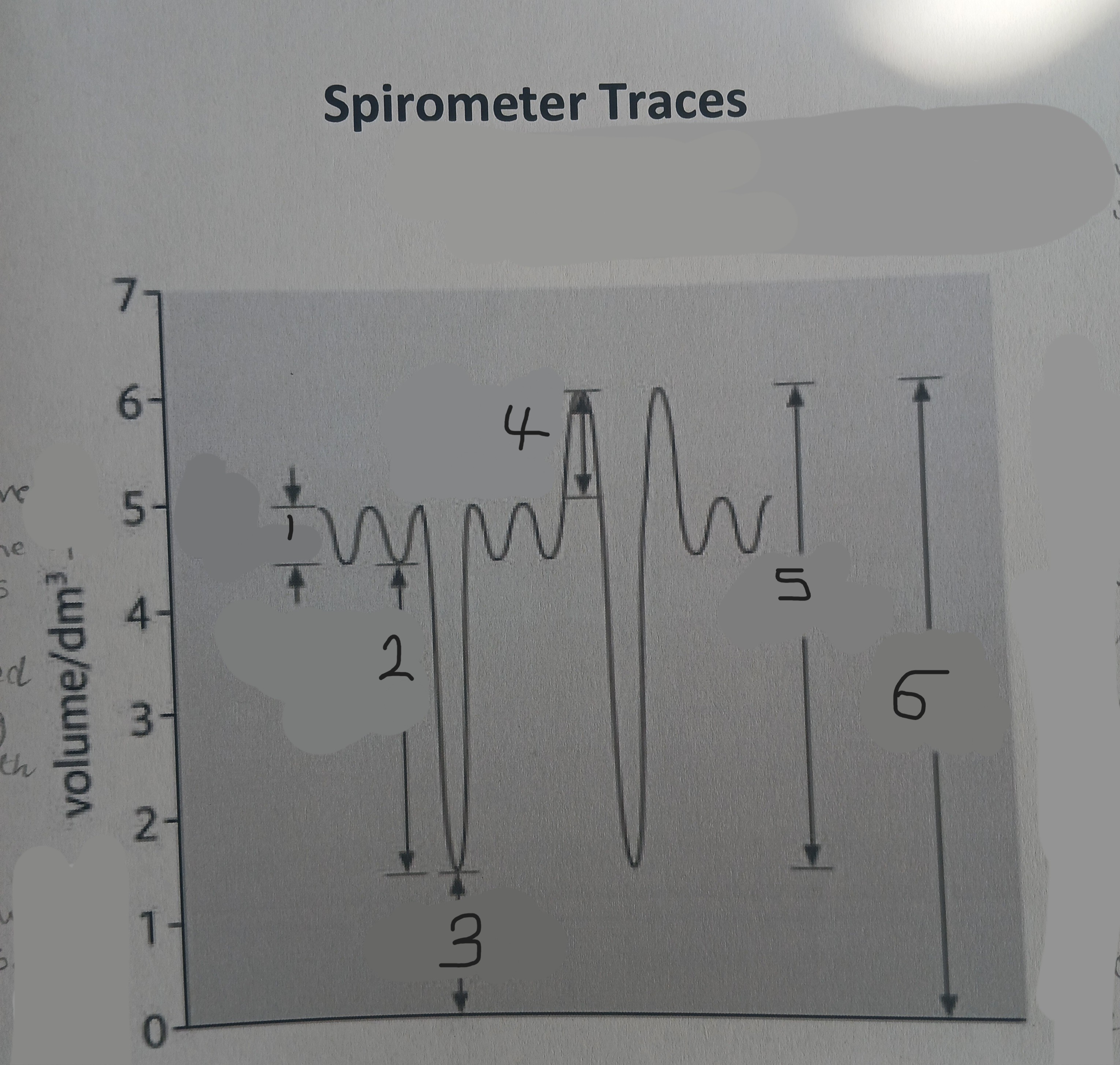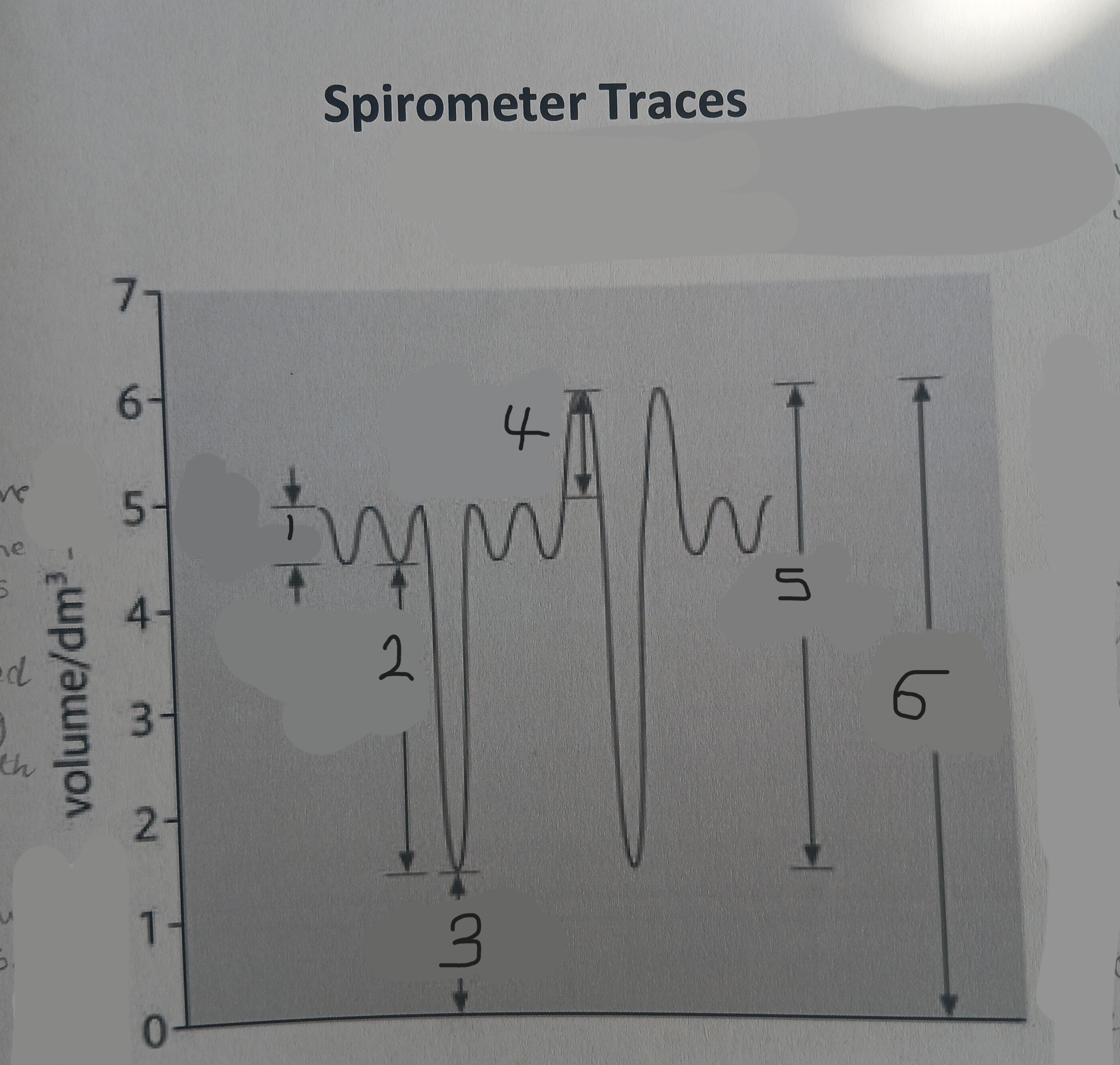Importance of Spirometer Reading of Lung volumes
1/14
There's no tags or description
Looks like no tags are added yet.
Name | Mastery | Learn | Test | Matching | Spaced |
|---|
No study sessions yet.
15 Terms

What is number 1?
Tidal volume (TV)

What is number 2?
Inspiratory reserve volume

What is number 3?
Residual volume

What is number 4?
Expiratory reserve volume

What is number 5?
Vital capacity

What is number 6?
Total lung volume
What is tidal volume?
the volume of air that is taken in and breathed out during each breath when at rest. It is usually 0.5dm3.
What is respiratory reserve volume?
the volume of air that is breathed in when taking a big breath, shown to be over the normal tidal volume. Approx. 2.5-3dm3.
What is residual volume?
Volume of air which always remains in the lungs even after breathing out. Approx. 1.5dm3.
What is Expiratory reserve volume?
How much air can be breathed out after taking a big breath in. Over/above normal Tidal volume. Approx. 1dm3.
What is vital capacity?
Max volume of air that can be moved in and out of the lung in one breath. This varies depending on the sex, age, size of the individual. Approx. 5dm3.
How do you calculate total lung capacity?
Vital capacity + residual volume together. It provides the total lung volume of a person.
What is peak expiratory flow?
Speed of air flowing out of a person when breathing out as fast as they can peak flow is usually used to see if the lungs are functioning properly.
What is forced vital capacity?
Lung function test measured by using a spirometer used to diagnose obstructive lung diseases, asthma etc. It requires the individual to breath out as forcefully and rapidly as possible.
What can forced vital capacity be used for?
To determine the obstruction amount in the airways.